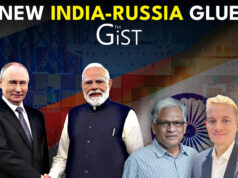“It is not normal, to see a head of state inserting himself or herself into the negotiations at this level. And normally trade negotiations are, you know, complex.”
That was former diplomat and trade expert V S Seshadri, talking to The Gist on the India-US bilateral trade negotiations and President Trump’s rather insulting remarks about this country.
India has not reacted to his insults, preferring to stick to the book, focusing on the negotiations and expressing its hopes for an agreement fair to both countries. But the Trump factor cannot be ignored.
“Trump is trying to achieve three or four things,” says Seshadri, “he’s trying to see if we can reduce the significant levels of trade deficit. He’s trying to see if he can increase domestic US manufacturing, which he feels, has got neglected.”
Trump also wants to reduce US dependence on strategic materials such as steel and aluminium, copper, pharmaceuticals, semiconductors and so on. He’s also trying to see if he can revenues by using tariffs as leverage and by using market access to the US as leverage.
Seshadri believes Trump does not have a uniform template applied in negotiations with every country. Of the six or seven countries he has struck deals with so far, in the case of the EU, Japan, Korea, all developed countries with some surplus capital to invest, he has got them to make commitments to invest in the US.
“He’s quite flexible in that sense, he’s ready to take whatever’s coming, does it meet his expectations and then of course he has to read it to his MAGA crowd, his domestic constituency.”
Trump’s personal involvement in the negotiations complicates issues for countries like India that approach things systematically, step-by-step and want everything documented. Trump’s desire for big announcements that are made followed by negotiations on the details undermines the Indian approach.
Tune in for more in this conversation with Ambassador V S Seshadri, former diplomat and trade expert.
Thirty eight years in journalism, widely travelled, history buff with a preference for Old Monk Rum. Current interest/focus spans China, Technology and Trade. Recent reads: Steven Colls Directorate S and Alexander Frater's Chasing the Monsoon. Netflix/Prime video junkie. Loves animal videos on Facebook. Reluctant tweeter.




